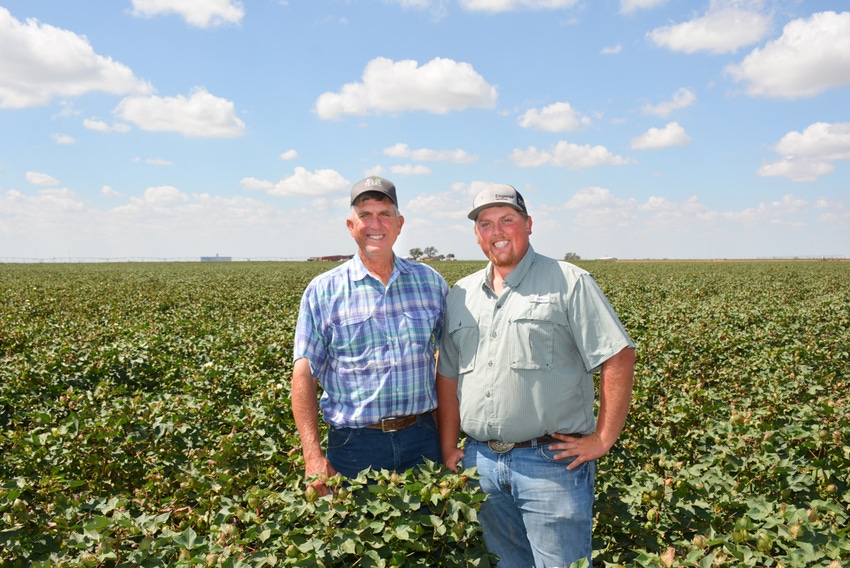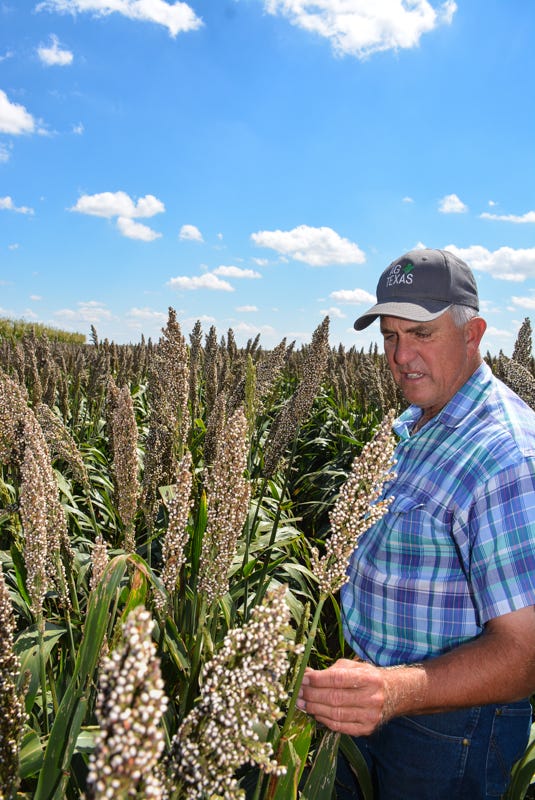
A depleting Ogallala Aquifer on the Texas Plains has a father warning his son — times are changing. And the son asking his father, “Then, what are we going to implement with the water we’ve got left?”
For Glenn Schur and his son Layton, of Plainview, Texas, a dramatic reduction in available irrigation is altering how and what they farm. While Glenn returned from college to the family farm in the 1980s, when crops were still furrow-irrigated and by the 1990s by center pivots, his son, a recent college graduate, has returned looking for alternatives to his dad’s center pivots and is transitioning towards dryland production.
“I keep telling Layton, our farming is fixing to change,” says Glenn. “We can’t farm that whole circle. We are starting to scratch our heads and ask ourselves, what are we going to do with those acres we’re not going to be able to farm? How are they going to be dryland and what dryland do we use?”
See, Texas growers convert pivot acres to drip
“It’s all about the water,” says Layton, as he looks out across one of their cotton fields.
ALMOST GUARANTEED
In the past, Glenn says, a grower with irrigation was almost guaranteed a crop, no matter the weather, but today not so much. “In the last 15 years, it’s become a wildcard. Many growers my age still think, ‘We can still plant that full circle,’ but the reality is, we can’t.”
One of the pivots Glenn put up in the 90s is no longer in use due to the lack of water, while across the road, Layton says they have a pivot where they are only irrigating 40 acres. “That’s all the water that place has. The rest of the acreage goes into wheat, which has been converted to graze livestock,” Layton says.
FALLOW GROUND
The 2017-2018 drought, coupled with the declining water table, left the Schurs and many other growers on the Texas Plains with costly fallow ground and more questions than answers. “I had 250 acres where the dryland never came up and we plowed it all summer. I told some friends, I’m going to spend more money plowing that fallow ground than I would have spent if I’d had a cotton crop out there.
“So, then we were asking ourselves, do we go in there and plant sorghum, let it get inches tall and let the freeze kill it? Or do we try to conserve moisture, hoping and praying to have a wet winter, so we are geared up to grow a dryland crop for next year? Or if we are going to have a wet winter, do we plant a wheat crop?”
Many scenarios, all of which are dependent on the ifs of weather.
The Schurs ended up planting most of the fallow ground in wheat. “And some of it where we got rain early, we put our cattle on it and have been grazing it out,” says Glenn. “Most of the wheat that didn’t get planted early enough, we’ll probably take to harvest.”
Then, Glenn says the goal will be to summer fallow the wheat ground with hopes of planting it to cotton in 2020.
“Another thing we've thought about doing on some of the acres, if we have moisture at the time of wheat harvest, is planting late milo in June or July after wheat harvest, so we can have a little more crop residue there for the cotton,” says Glenn.
On the acres where they didn’t get winter wheat planted, the Schurs are considering planting early milo in mid to late April. “We’ll pant some early season sorghum to get ahead of the sugarcane aphid.
“We're looking at limited irrigation on center pivots where we don't have enough water to water a full circle, so that's kind of the semi dryland/dryland scenario. What we'll do is limit the number of acres we have under a pivot to where we feel like we have enough water to make a good crop on the rest of it.”
WATER DATA
From the water data Glenn and Layton have collected, it takes anywhere from 3 gallons to 3.5 gallons per acre per minute to irrigate cotton at 60 percent of evapotranspiration (ET) during peak water use. “There’s no need for us to plant more than we can take care of under a center pivot. It's got to be a dryland scenario, so that's what we're basing our numbers on,” explains Glenn.
CHANGE
As the water table is decreasing, the Schurs are changing their operation by diversifying their crop rotation. Divided by a turnrow, on one of their farms, the east side of the circle has cotton, the other has tall millet. Once the millet is harvested, the field will be fenced off for cattle. “We’ve integrated cattle into our operation, which is part of our sustainability because the cattle are grazing the crop residue but they won’t take it all off,” says Glenn.

The Schurs have also shifted their calving season. Rather than calving in the summer, when there is the least amount of pasture, they now calve in the fall, “because the winter months are when we have more pasture and stalks, so we can grow those calves the most.
See, Free water college set for Jan. 17
“I think as we see our water decline, we are going to see more people go into cattle,” predicts Glenn.
About the Author(s)
You May Also Like






